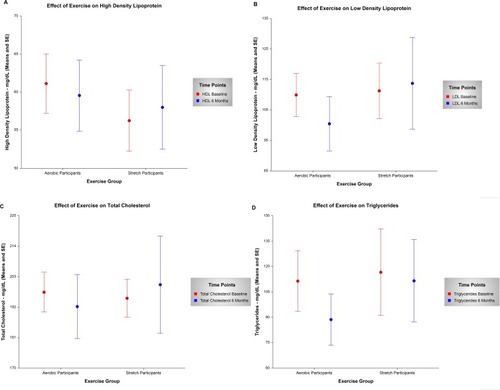Figures & data
Table 1 Baseline Characteristics of Study Participants by Exercise Group. Participants With Baseline VO2Max Data Randomized to Aerobic Exercise Program and Stretch Exercise Control Group
Table 2 Mean Change in Lipoprotein Particle Sizes and VO2Max by Exercise Groups. Correlation Between Change VO2Max (6-Month Vs Baseline) and Change in Lipid Particle Size. Increases in VO2Max Resulted in Decreases in Lipid Particle Sizes of the Less Favorable Lipids
Table 3 Linear Regression Coefficients and Standard Errors for the Relationship Between Change in VO2Max Associated with Lipid Particle Sizes in Stretch and Aerobic Groups. In Unadjusted Analysis (Model 1), Among all the Participants, Changes in VLDL Particle Size (Total, Medium, And Small) and Total LDL Particle Sizes Were Significantly Associated with a Change in VO2Max. After Adjusting for Age, Gender and Baseline Particle Size (Model 2), the Relationship of Lipoprotein Particle Sizes Including Total LDL Particle Size did not Change With Change in VO2Max
Table 4 Training-Related Changes in Particle Size with Changes in VO2Max
Figure 1 Error-bar charts showing the mean estimates and standard errors for HDL concentration (A), LDL concentration (B), total cholesterol (C), and triglycerides (D) by aerobic and stretch groups.

